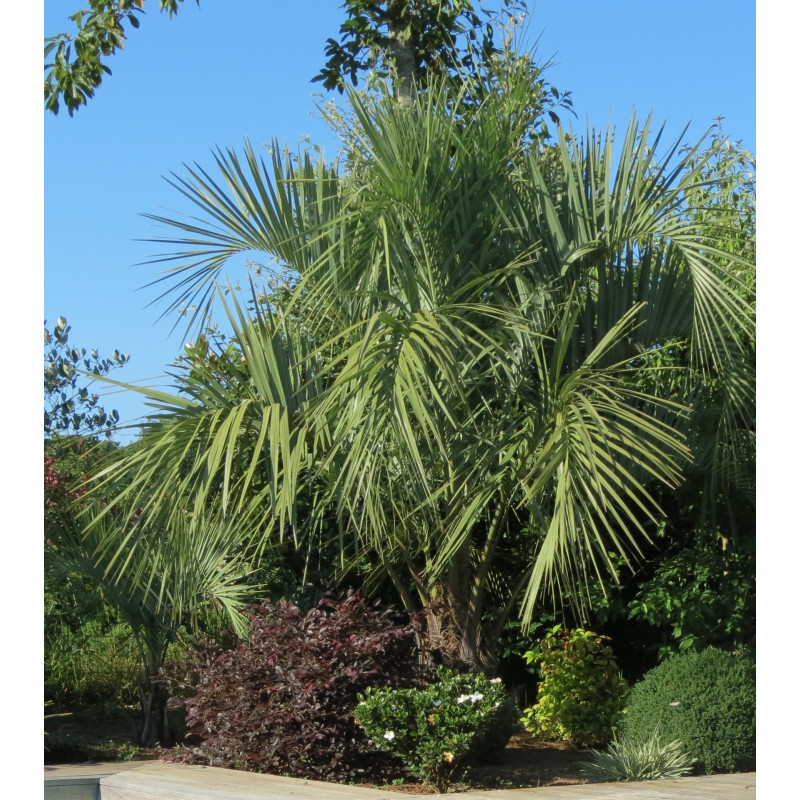

|
Palm trees
See all Palm trees
|
||||
|
Banana trees
See all Banana trees
|
||||
|
|
||||
|
Trees and shrubs
See all Trees and shrubs
|
||||
|
Edible fruit
See all Edible fruit
|
||||
|
Other botanical families
See all Other botanical families
|
||||






Hardy exotic-looking palm with bluish leaves. -15°C (5°F) for mature plants. Buy it online in 5- to 60-litre pots (see French side for size details).
Cocos australis, Cocos capitata, jelly palm, Pindo palm
Its name has recently been changed to odorata (the former odorata is now known as catarinensis)
From the south eastern coasts of Brazil (Porto Alegre) to the east of Uruguay (Montevideo)
-10 to -12°C for young plants (14 to 10°F), down to -15°C for mature ones (5°F). It is one of a few really hardy feathery palms, which is quite unexpected for such a tropical-looking palm.
A stout, quite fast-growing palm: its trunk rarely reaches more than 6 metres. It has a beautiful crown of arching bluish or silvery palms. Yellow flowers appear after a few years in cultivation, followed by edible orange fruit, which taste like a mixture of pineapple, apricot and plum.
It needs sun and water, not too much fertilizer; avoid watering its heart.
It has been in cultivation in France for over 160 years, and gorgeous specimens can be seen in the Basque country and in Brittany.
Data sheet
Your review appreciation cannot be sent
Report comment
Report sent
Your report cannot be sent
Review sent
Your review cannot be sent

Hardy exotic-looking palm with bluish leaves. -15°C (5°F) for mature plants. Buy it online in 5- to 60-litre pots (see French side for size details).